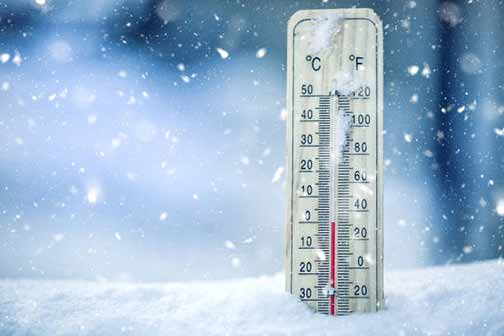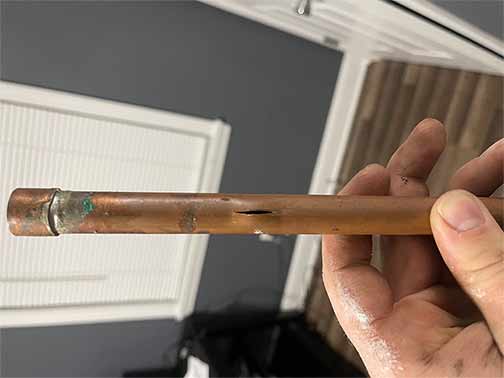
As the winter season approaches, it is crucial to prepare your plumbing system to withstand the cold temperatures. Proper preparation can prevent costly damages and ensure that your home remains warm and comfortable. Start by inspecting your plumbing system for any leaks or weak points. Fixing these issues before the cold sets in can save you from more significant problems down the line. Additionally, make sure to disconnect and drain all outdoor hoses and shut off the water supply to exterior faucets to prevent freezing.
Another essential step in preparing your plumbing for winter is to insulate exposed pipes. This can be done using foam pipe insulation, which is readily available at most hardware stores. Pay special attention to pipes located in unheated areas such as basements, attics, and crawl spaces, as these are more susceptible to freezing. Lastly, consider installing a frost-free hose bib on your outdoor faucets to provide an extra layer of protection against freezing temperatures.
Insulating Pipes for Maximum Protection
Insulating your pipes is one of the most effective ways to protect them from the harsh winter weather. Proper insulation not only helps to prevent freezing but also improves energy efficiency by reducing heat loss. There are several types of pipe insulation materials available, including foam, fiberglass, and rubber. Foam pipe insulation is the most common and easiest to install, making it a popular choice for homeowners.
When insulating your pipes, be sure to cover all exposed sections thoroughly. This includes pipes in unheated areas, as well as those running along exterior walls. For added protection, you can also use heat tape or heat cables, which provide a consistent source of warmth to keep your pipes from freezing. Be sure to follow the manufacturer’s instructions when installing heat tape or cables, as improper installation can pose a fire hazard.
Preventing Frozen Pipes
Frozen pipes can cause significant damage to your plumbing system and home. To prevent your pipes from freezing, maintain a consistent indoor temperature, even when you are away from home. Set your thermostat to a minimum of 55°F (13°C) to ensure that your pipes remain warm enough to avoid freezing.
Another effective way to prevent frozen pipes is to allow a small trickle of water to flow through your faucets during extremely cold weather. This helps to keep the water moving, reducing the likelihood of freezing. Additionally, open cabinet doors under sinks to allow warm air to circulate around the pipes. If you are leaving your home for an extended period during the winter, consider shutting off the main water supply and draining your pipes to prevent any potential freezing issues.
Handling a Burst Pipe
Despite your best efforts, there may be times when a pipe bursts due to freezing temperatures. In such cases, it is essential to act quickly to minimize damage. First, shut off the main water supply to prevent further water from entering the damaged pipe. Next, open all faucets to drain any remaining water and relieve pressure in the system.
Once the water has been shut off and the system drained, locate the burst pipe and assess the damage. If the damage is minor, you may be able to repair it yourself using a pipe repair clamp or a piece of rubber and a hose clamp. However, if the damage is extensive or you are unsure of how to proceed, it is best to call an emergency plumber to handle the repair. In the meantime, use a wet/dry vacuum or towels to clean up any water and prevent further damage to your home.

Maintaining Your Water Heater
Your water heater plays a crucial role in keeping your home warm and comfortable during the winter months. To ensure that it operates efficiently, perform regular maintenance tasks such as flushing the tank to remove sediment buildup, checking the pressure relief valve, and insulating the tank and pipes. Sediment buildup can reduce the efficiency of your water heater and lead to potential damage over time. Flushing the tank at least once a year can help to prevent these issues and extend the life of your water heater.
Additionally, inspect the pressure relief valve to ensure that it is functioning correctly. This valve is designed to release excess pressure from the tank, preventing potential explosions. If the valve is faulty or leaking, it should be replaced immediately. Insulating the tank and pipes can also help to improve energy efficiency by reducing heat loss. This can be done using a water heater insulation blanket and foam pipe insulation, both of which are available at most hardware stores.
Outdoor Plumbing Considerations
Outdoor plumbing systems are particularly vulnerable to freezing temperatures and require special attention during the winter months. Start by disconnecting and draining all outdoor hoses to prevent water from freezing and causing damage. Next, shut off the water supply to exterior faucets and drain any remaining water from the pipes. If your home has an irrigation system, be sure to winterize it by blowing out any remaining water using an air compressor.
For added protection, consider installing insulated faucet covers on your exterior faucets. These covers provide an extra layer of insulation, helping to prevent freezing. If you have a swimming pool, follow the manufacturer’s winterization guidelines to protect the plumbing and equipment from freezing temperatures. This may include draining the pool, adding winterizing chemicals, and covering the pool with a protective cover.
Energy Efficiency Tips for Winter Plumbing
Improving the energy efficiency of your plumbing system during the winter months can help to reduce your utility bills and minimize your environmental impact. Start by insulating your pipes and water heater to reduce heat loss. Additionally, consider installing low-flow fixtures, such as showerheads and faucets, to reduce water consumption and energy usage.
Another effective way to improve energy efficiency is to fix any leaks in your plumbing system. Even small leaks can lead to significant water and energy waste over time. Regularly inspect your pipes, faucets, and fixtures for any signs of leaks and repair them promptly. You can also reduce energy consumption by lowering the temperature on your water heater to 120°F (49°C). This is typically hot enough for most household needs and can help to reduce energy usage.
Emergency Plumbing Kit for Winter
Having an emergency plumbing kit on hand can help you to quickly address any issues that arise during the winter months. Your kit should include essential tools and supplies such as a pipe wrench, pliers, pipe repair clamps, heat tape, a wet/dry vacuum, and towels. Additionally, keep a list of emergency contact numbers, including a reliable plumber, in case you need professional assistance.
In the event of a plumbing emergency, such as a burst pipe, having the right tools and supplies on hand can help you to minimize damage and make temporary repairs until a professional can arrive. Be sure to familiarize yourself with the contents of your emergency plumbing kit and know how to use each item effectively. Regularly check your kit to ensure that all tools and supplies are in good working condition and replace any items as needed.
Professional Help and When to Call an Emergency Plumber
While many winter plumbing tasks can be handled by homeowners, there are times when it is best to call a professional plumber. If you encounter a plumbing issue that you are unsure how to address, or if the problem is extensive, it is always best to seek professional assistance. Plumbers have the knowledge, experience, and tools necessary to handle complex plumbing issues and can help to prevent further damage to your home.
Some common situations that may require professional help include burst pipes, significant leaks, water heater malfunctions, and sewer line issues. Additionally, if you are planning any major plumbing upgrades or installations, it is best to consult with a professional to ensure that the work is done correctly and safely. By knowing when to call a plumber, you can help to protect your home and maintain the integrity of your plumbing system.
Long-Term Plumbing Maintenance
Maintaining your plumbing system is essential for preventing issues and ensuring its longevity. Regular inspections and maintenance tasks can help to identify and address potential problems before they become significant. Start by performing routine checks of your pipes, faucets, and fixtures for any signs of leaks or damage. Fixing these issues promptly can help to prevent more extensive damage and costly repairs.
Additionally, schedule annual professional inspections of your plumbing system to ensure that everything is in good working order. A professional plumber can identify potential issues that may not be apparent to the untrained eye and provide recommendations for maintenance and repairs. Regularly flushing your water heater, insulating pipes, and maintaining your outdoor plumbing systems are also essential tasks for long-term plumbing maintenance.
By taking a proactive approach to plumbing maintenance, you can help to ensure that your system remains in good condition and functions efficiently throughout the winter months and beyond. This not only helps to prevent costly repairs but also contributes to the overall comfort and safety of your home.

